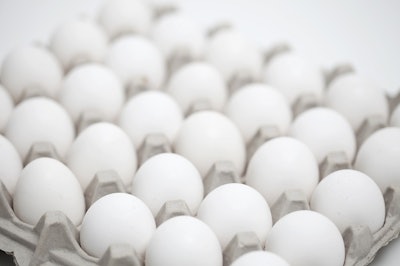
A month-long period of consultation has opened in the European Union (EU). The European Commission (EC) has invited responses to its latest proposals on the marketing of free-range eggs, among other food products.
For the egg sector, a number of changes are proposed by the EC from the current regulation, which came into effect 15 years ago. These follow a series of meetings with the Expert Group on this market sector from EU member states.
Among the key changes are that solar panels may be installed in outdoor runs accessed by free-range hens. This aims to boost the production of renewable energy. Second, marking of the eggs should be carried out on the farm of origin in a change that aims to promote product traceability. It will align rules on the marking of eggs as “free-range” for organic eggs when hens are prevented access to outdoor runs due to legislation. This would include restrictions applied in the case of a high risk of avian influenza outbreaks.
Other changes proposed are the removal of the date of minimum durability of eggs, and clarification over the marketing of aromatized eggs.
Closing date for responses to these proposals is May 19, 2023.
As part of the EU Farm to Fork Strategy, the new version will repeal Regulation No.589/2008, and supplement Regulation No.1308/2013 on marketing standards for eggs.
The EC has also put forward proposals aimed at achieving uniformity across the region for poultry meat, as well as a range of other food products and fruit juices.
Latest on the European egg market
Average price of Class A eggs in the EU is EUR262.42 (US$288.93) per 100kg, according to the Directorate General for Agriculture and Rural Development, DG AGRI market situation dashboard dated April 19. While this price represents a slight dip compared with the previous week and month, it remains 36.6% higher than on this date in 2022.
Prices vary by production system, as expected. While cage and barn eggs are in the range EUR250-300, free-range is approaching EUR350, and organic eggs are not far off EUR450.
In 2022, almost 57% of hens in the EU were kept in cage-free systems. Around 36% were in barns, 14% on free-range, and 6.5% were on organic systems. All the remaining 43.2% of hens were housed in enriched cages.
These figures reveal wide differences between member states in the adoption of the different production systems, even among the highest producers. For example, fewer than 5% of Germany’s hens are in enriched cages, while 72% of Polish birds are caged. In France, 12% of hens are in barns, but this system accounts for 59% of Dutch birds. Free-range populations range from 5% in Italy to almost 25% in Germany.
Last year, the leading egg-producing nations were France and Germany (each with 14% by volume), Spain and Italy (each with 12%), the Netherlands (10%), and Poland (8%).
In 2022, the EU was the leading trading bloc behind Turkey in terms of exports of eggs and egg products. Compared with Turkish trade of around 17,000 metric tons (mt), the EU exported around 16,000mt.
According to the same source, EU imports were up substantially in 2022 at 50,000mt (in egg equivalents) from 37,000mt the previous year.

















